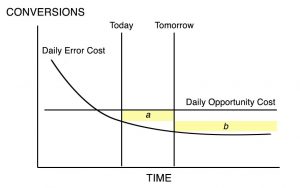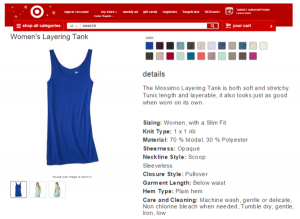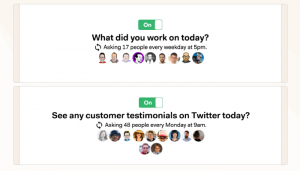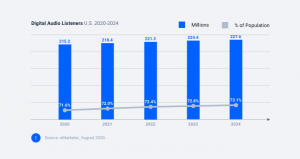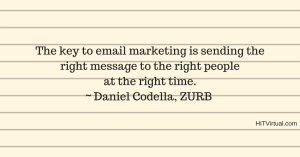Social media is a lucrative platform if you can win over people over. And that’s a big if. It takes time, brilliant content, and constant engagement to have a strong social media presence with a significant following.
If you’re looking for a quick and powerful way to grow your social media stock, then consider collaborating with another party.
By collaborating with an influencer or another brand for social media growth, you stand to:
- Reach out to your collaborating partner’s audience that’s ready to listen
- Develop your online presence and brand image fast
- Build trust in an audience instantly
To get these benefits, we’re going to look at helpful strategies to pull off a social media collaboration successfully. Done well, you can get more than a simple brand mention or a shout out. Such superficial attempts only lead to your brand disappearing from your audience’s horizon soon.
With the strategies laid out here, you’ll skyrocket your social media presence and build a follower-base that lasts.
Keep your branding consistent
One of the potential challenges that can arise from a social media collaboration is managing two different brands. You need to ensure that you’re producing cohesive content without compromising on brand integrity.
Before starting out on a collaboration, decide on what your priorities are. List out the following when choosing the right partner:
Brand values: Does the potential partner influencer or brand have values that are aligned to your own? Or do their values, at the very least, complement yours? This is important because your brand message needs to be consistent to avoid alienating your own audience.
Product Similarity: Think about whether it makes sense for you to collaborate with the other party in terms of how well your products complement each other. Collaborating with a competing product is a lose-lose situation. You also want to avoid those products which are completely unrelated. While collaborating, try to find a partner where your content and products complement each other instead of taking away from your brand or product.
Target audience fit: Does your potential partner’s audience make sense for your business? For example, if you’re a business dealing with fast food, then it won’t help to target an audience that’s focused on home cooking or healthy eating. Make sure that your partner’s audience can convert into your own customers. For example, luxury automobile manufacturer collaborated with Montblanc, another luxury item. In this case, they both target high-income and status-aware customers, which makes sense.
This first step needs care and time because once you know what your target is and choose a compatible partner, everything else is easier.
Define roles and expectations
When collaborating with another brand, clearly you set out your expectations in terms of goals, tasks, roles, and responsibilities. Create documentation that gives you a guideline for managing problems as a way to prevent misunderstandings down the line. Here are some things to plan for:
- Who is responsible for creating content, graphics, and for approving them
- The account(s) from which posts shared
- How to respond to customers questions and any kind negative feedback or press
- The landing pages that viewers will be sent to
- How revenue will be distributed
- The contributions each party will make in terms of giveaway prizes, advertisement fees, and more
This is a good time to define the kind of collaboration you want. Long-term partnerships will have different goals than a simple cross-promotion of each other’s content and products for a seasonal holiday. The more details you flesh out, the better you’ll work with your collaborating partner.
Create a story and style guide
Once you’ve chosen your partner and made expectations clear, you’re good to start making the actual story that you’ll use on social media.
One way to approach your social media collaboration is to directly promote each other. But an interesting way would be to tell a story to your audiences. People respond to emotional content and a good story can tick all the right boxes to create engagement.
If you prefer, think of this step as coming up as a theme or a voice instead of a story with a beginning, a middle, and an end. For example, Starbucks and Spotify had a collaboration and it was largely centered around music. Music plays an important role in creating a great atmosphere for the coffee chain and the brands highlighted how coffee and music together make for a great experience.
With a story or a theme in place, then create a style guide. Again, the more details you flesh out, the more likely you’ll be on the same page.
Do you use casual and conversational language when talking to customers or a more professional, informative tone? What colors do you use or messages to your prioritize? When you build a great style guide and story, you’ll have a cohesive message for your audience. You’ll also have a framework to help you come up with awesome content ideas.
Use the right tools
When carrying out your social media collaboration you need to have good tools to communicate and support each other. Managing teams and content across different teams in the same organization can be hard enough, and it’s even more so when you’re working across brands.
Use social media management tools and content tools to help you not just build content but also manage post sharing, comments, customer support issues, and more. So, here are some collaborative tools that can help you.
- Content creation tool: Use a collaborative tool like Canva Pro to allow multiple members to create, share, and edit content. An added advantage is that you can save your brand identity elements on it like fonts, colors, and logos. It makes it easier for users to drag and drop or click the items they need.
- Social media management: Tools like Hootsuite allow multiple people to access and manage social media from a single place. You can also create feeds to monitor how people respond to a brand by tracking mentions and hashtags
- Analytics: It’s vital to set up analytics from the very beginning. It will help you gauge how well your campaigns are working and whether you should tweak them for greater effect.
The tools you use will play a major role in how well your social media marketing succeeds. Make sure that you share information and work together by leveraging collaborative tools.
Conclusion
A good social media collaboration can help you grow your audience and boost conversions fast. In this post, we focused on how to approach and set up your social media collaboration so that it gets the best start. Make use of the guides and tool suggestions given here to help you and your collaborating partner see the best results.
Digital & Social Articles on Business 2 Community(45)

